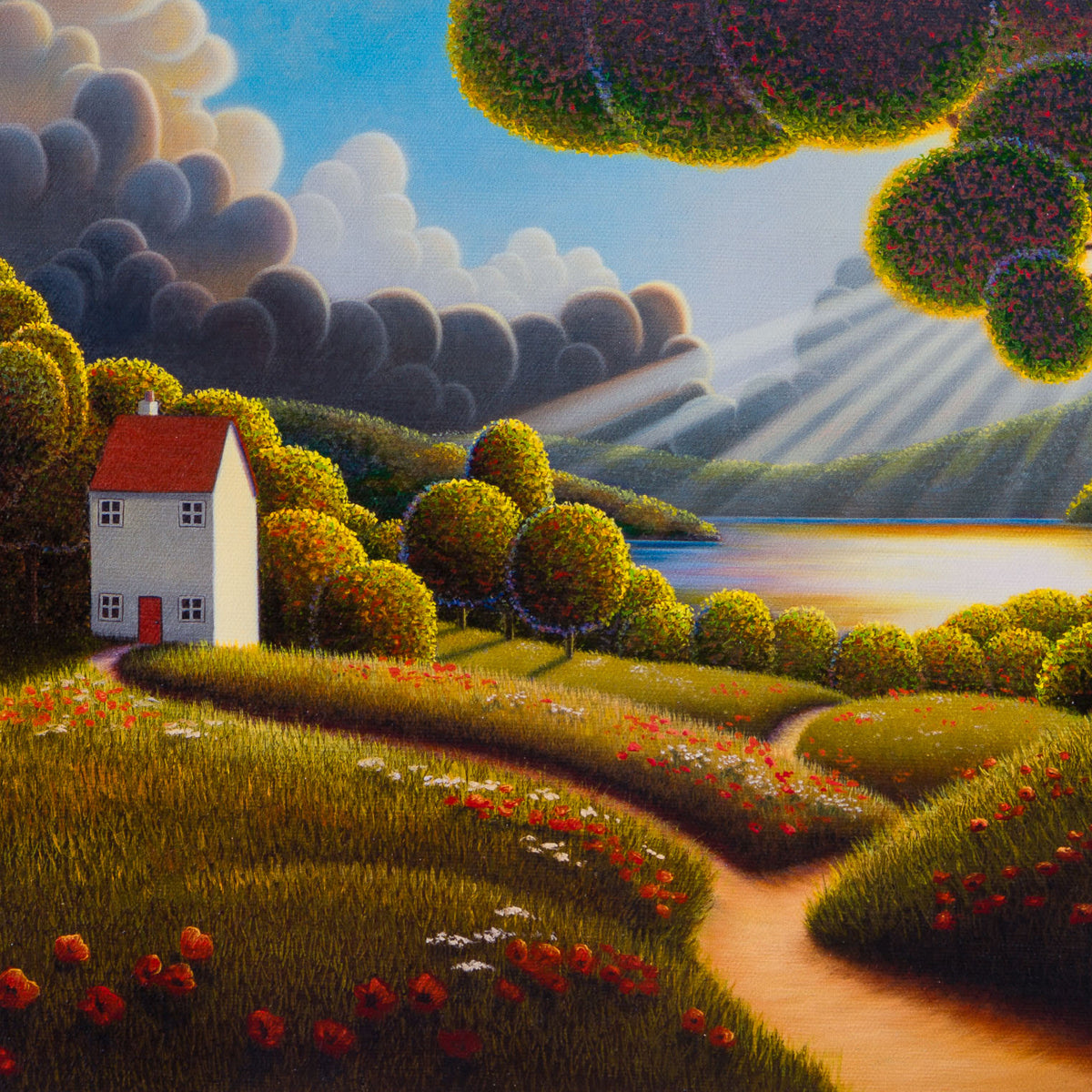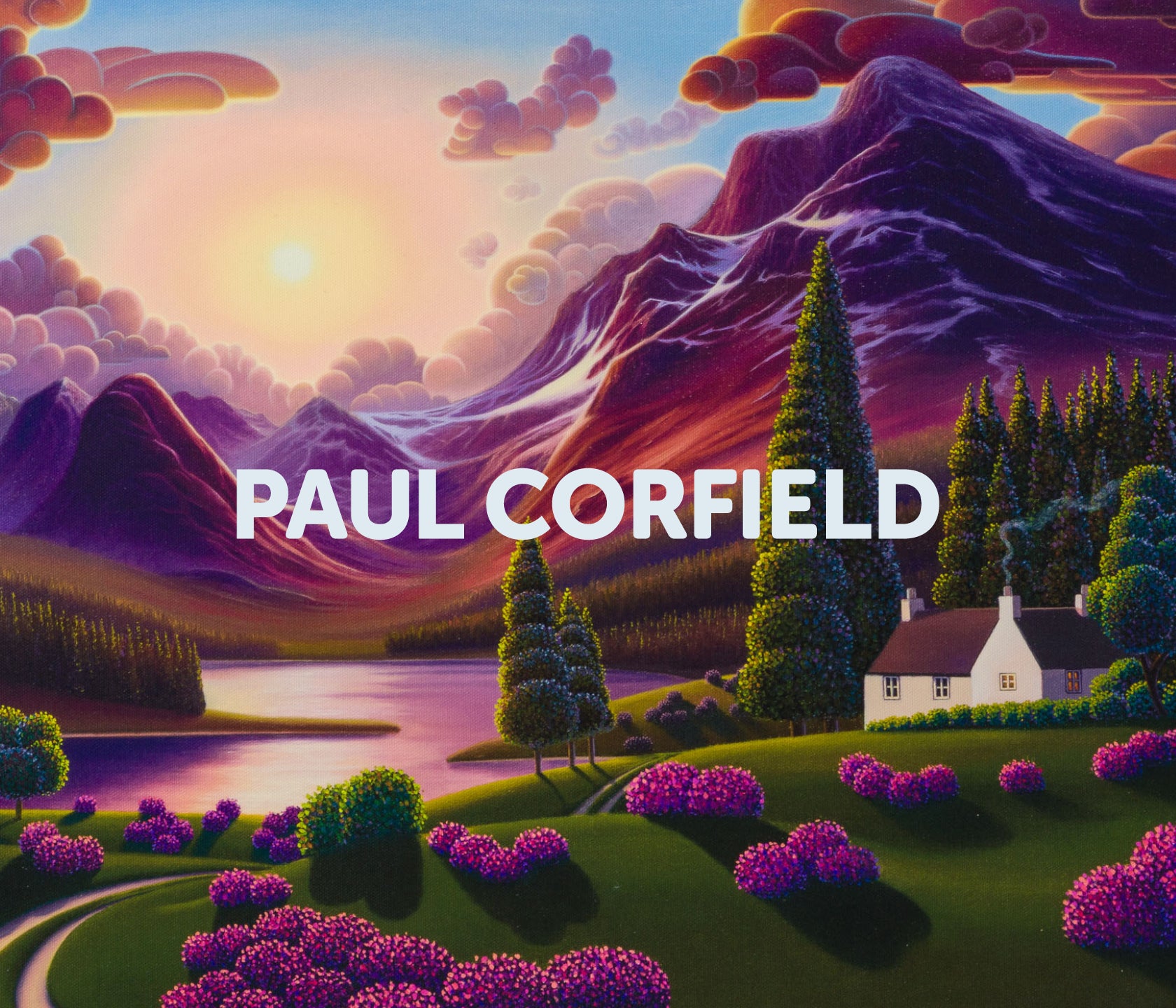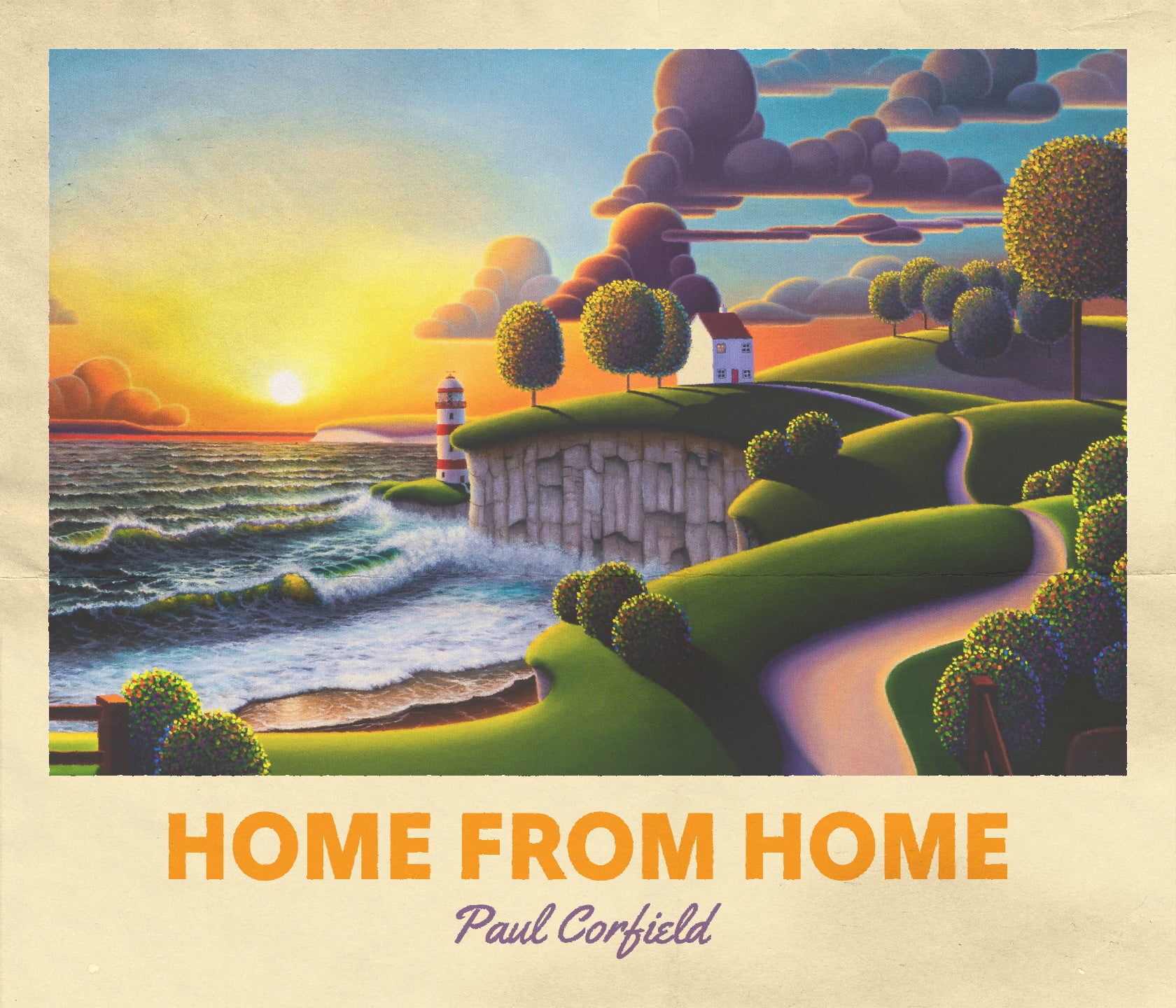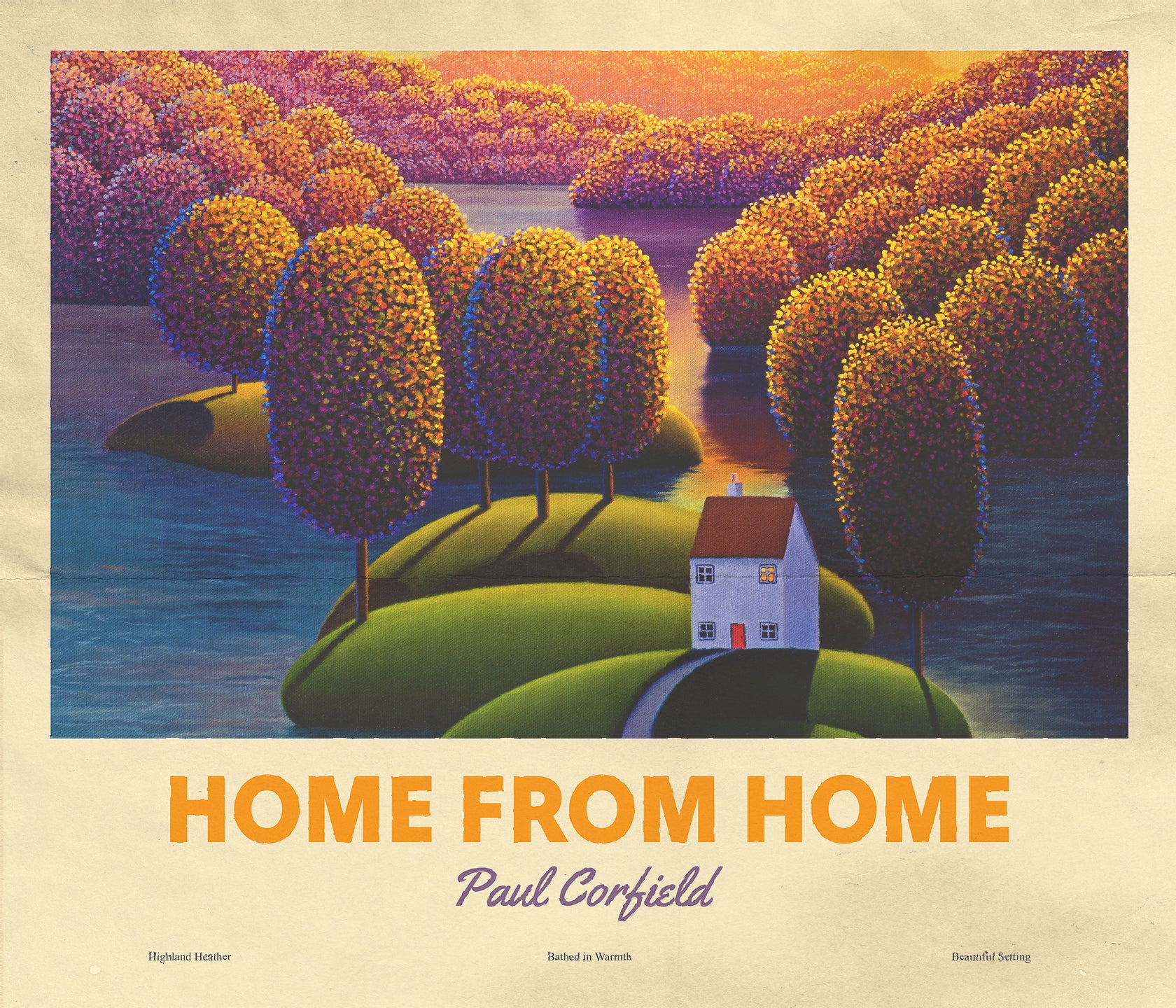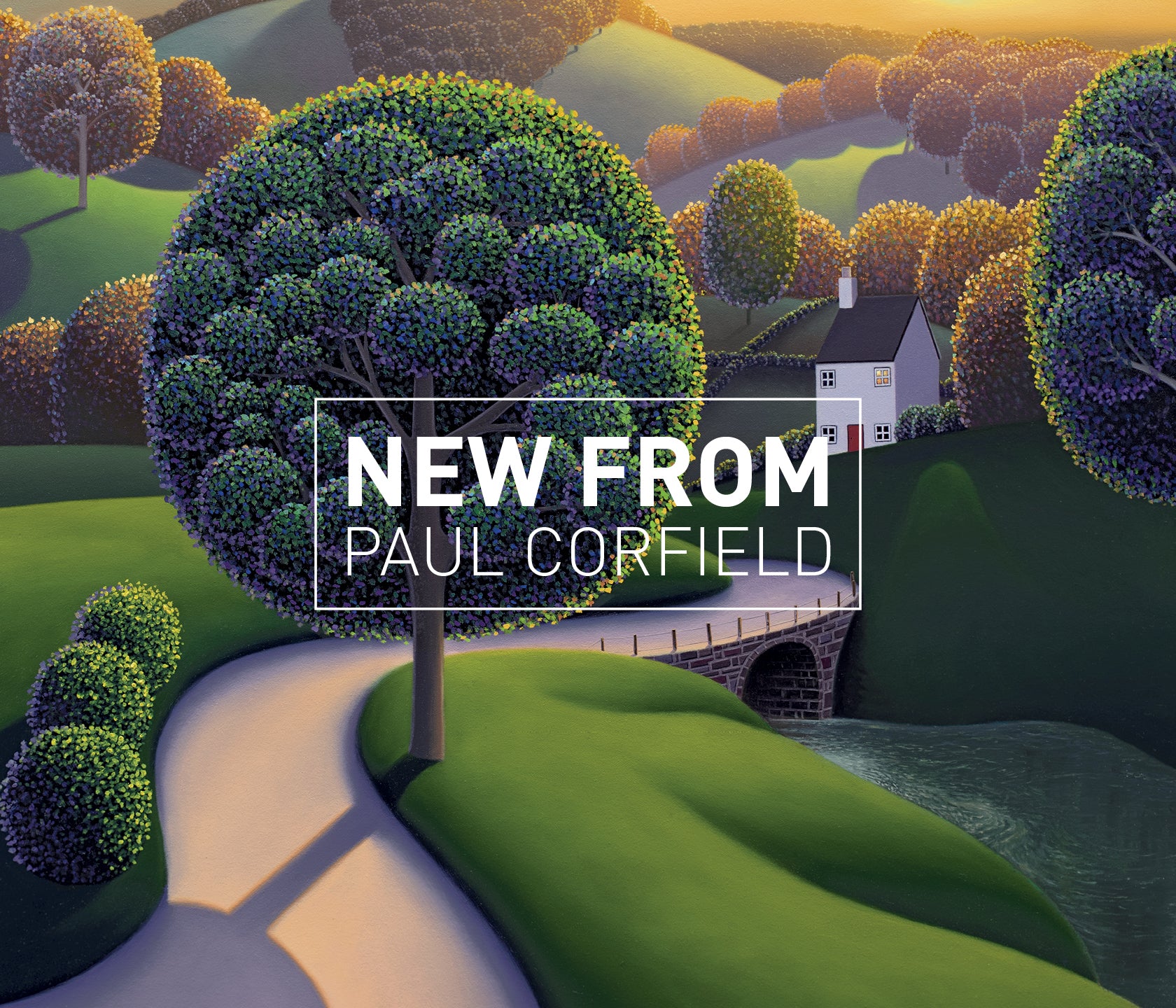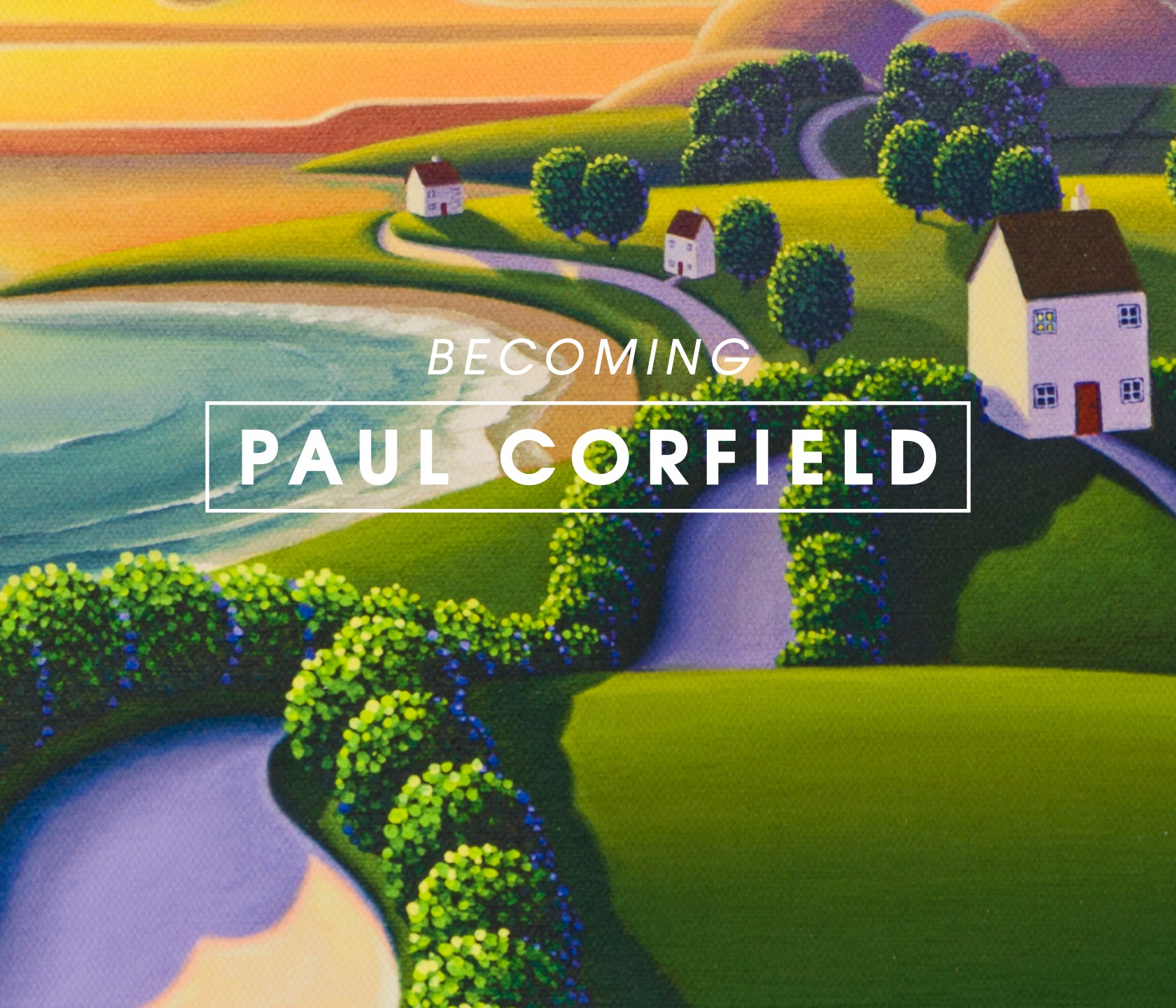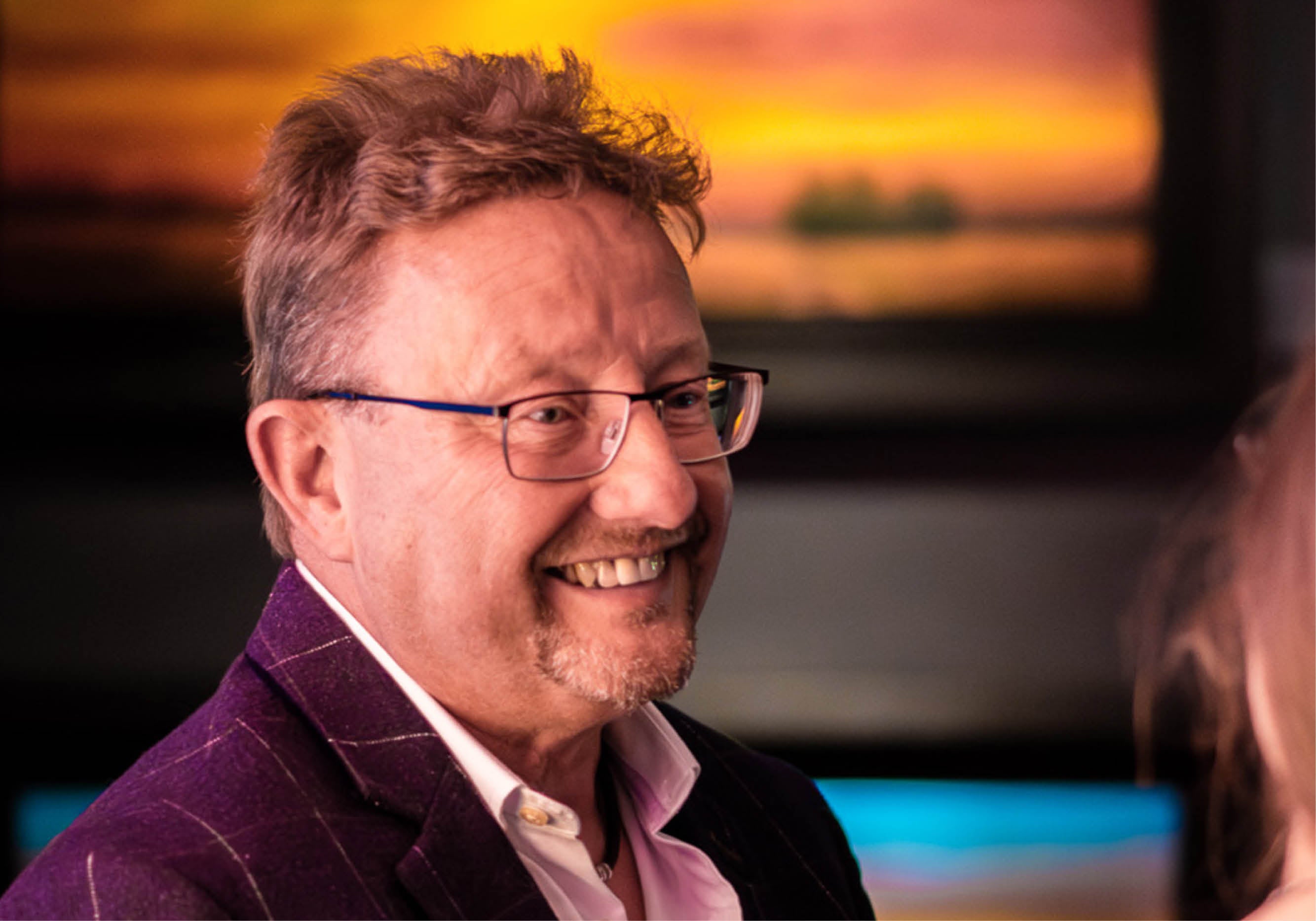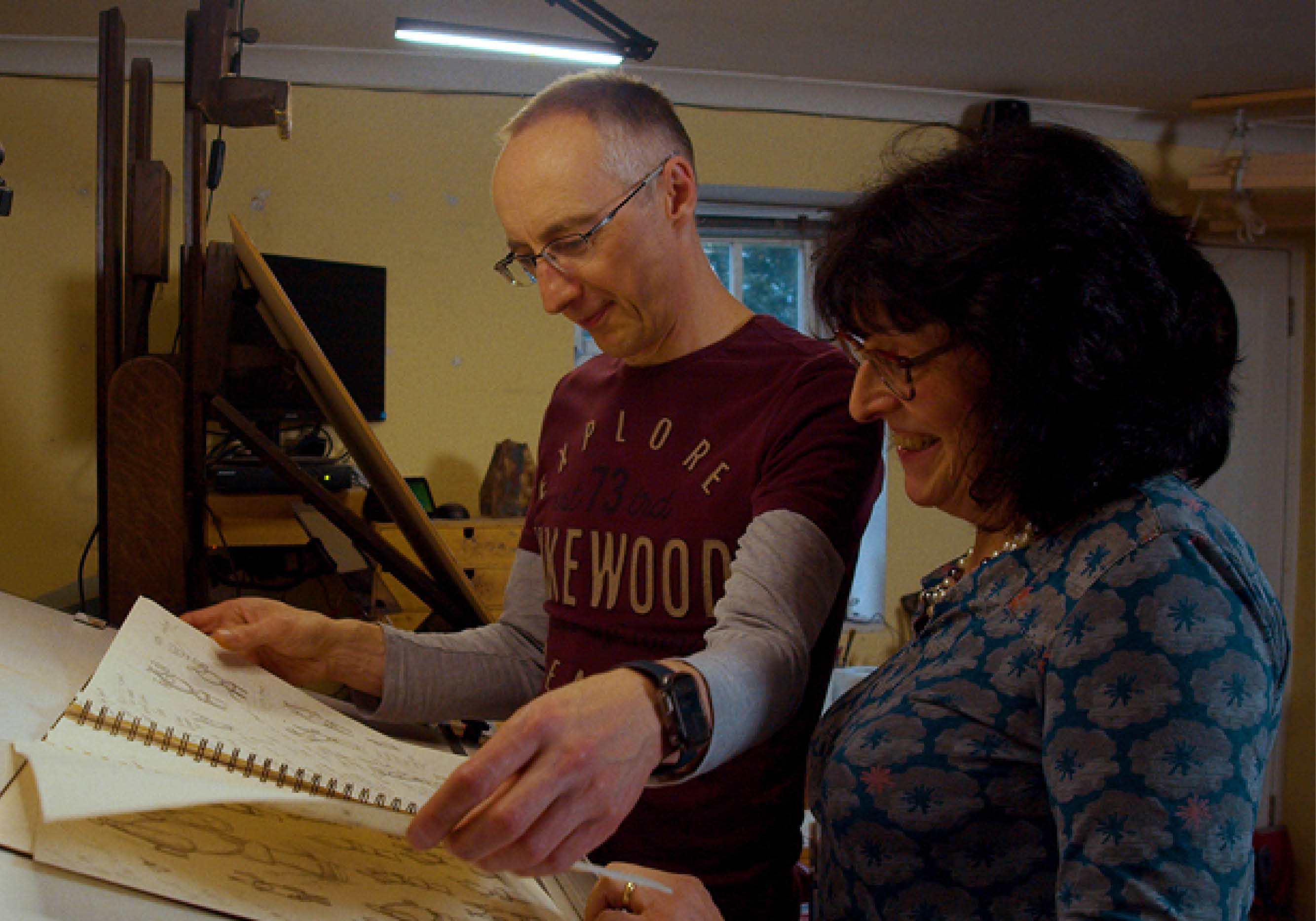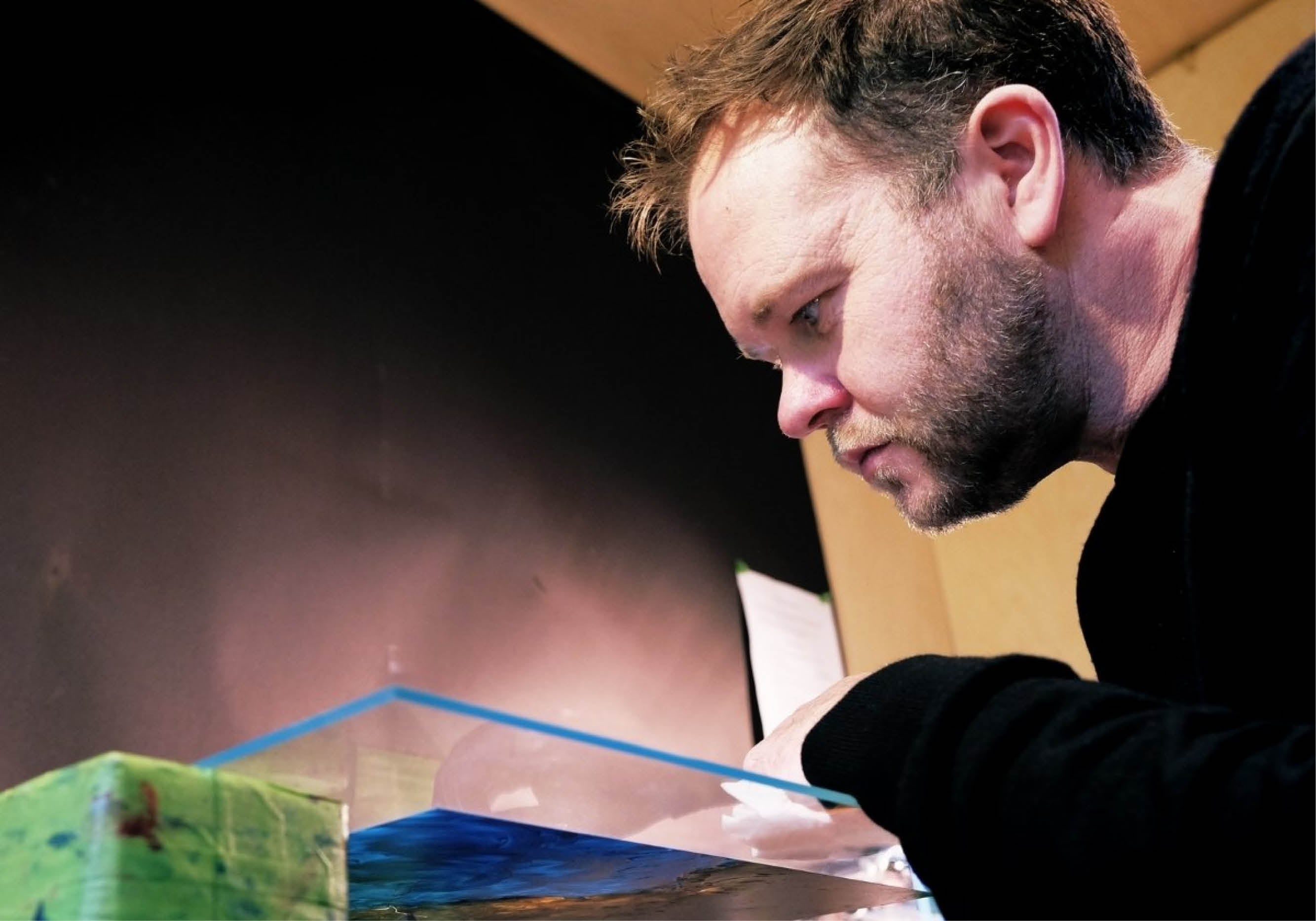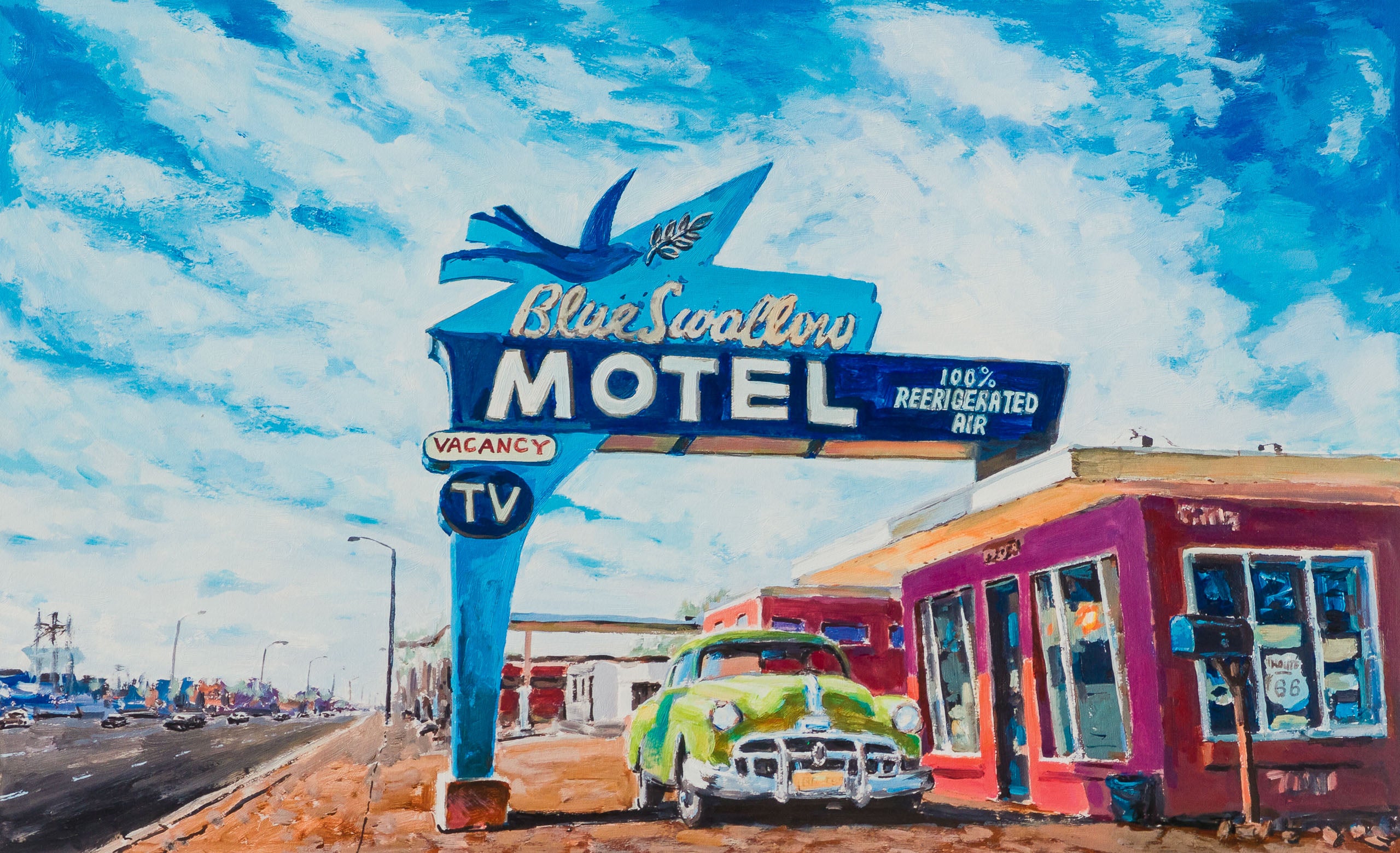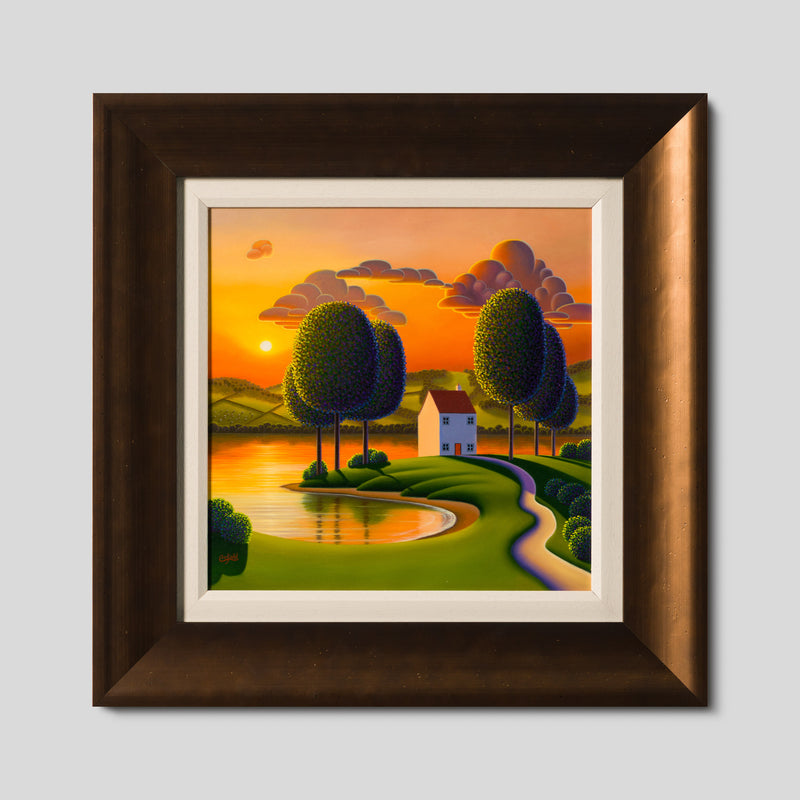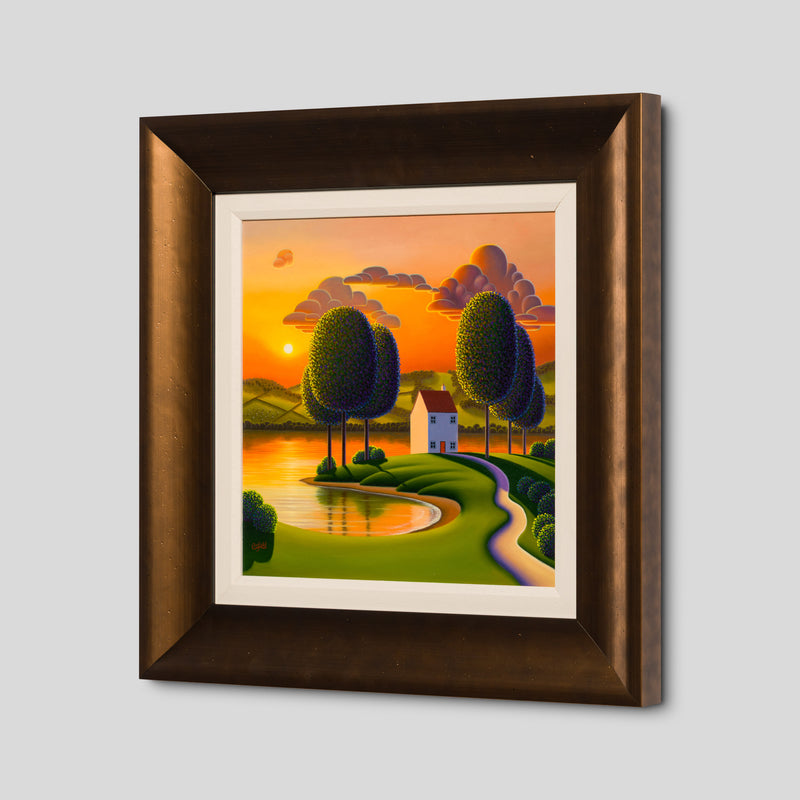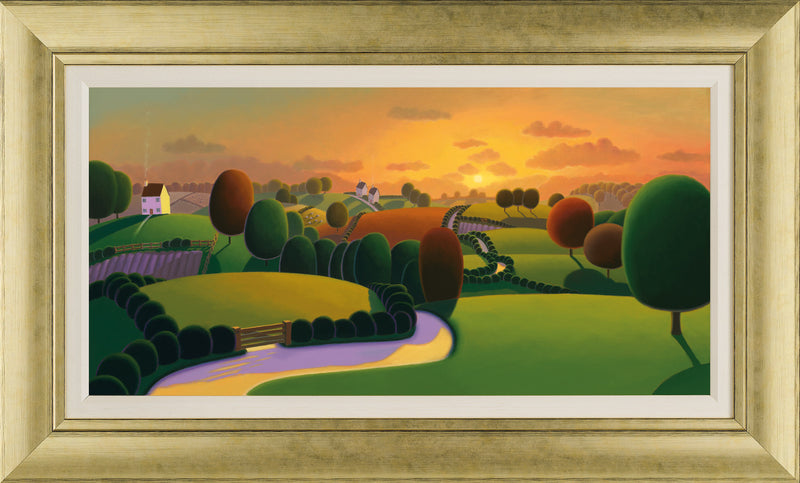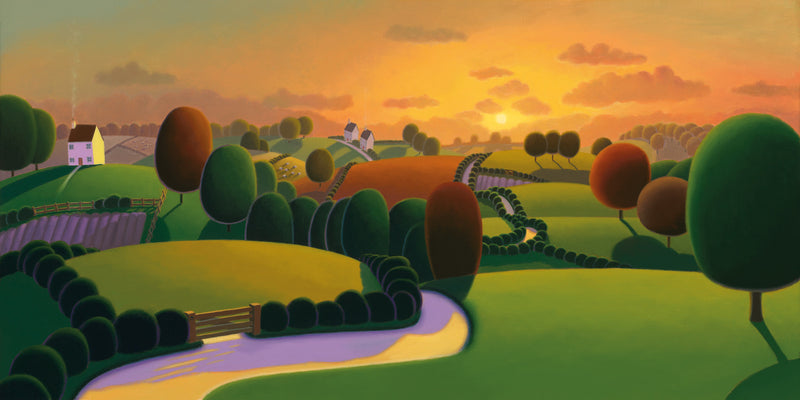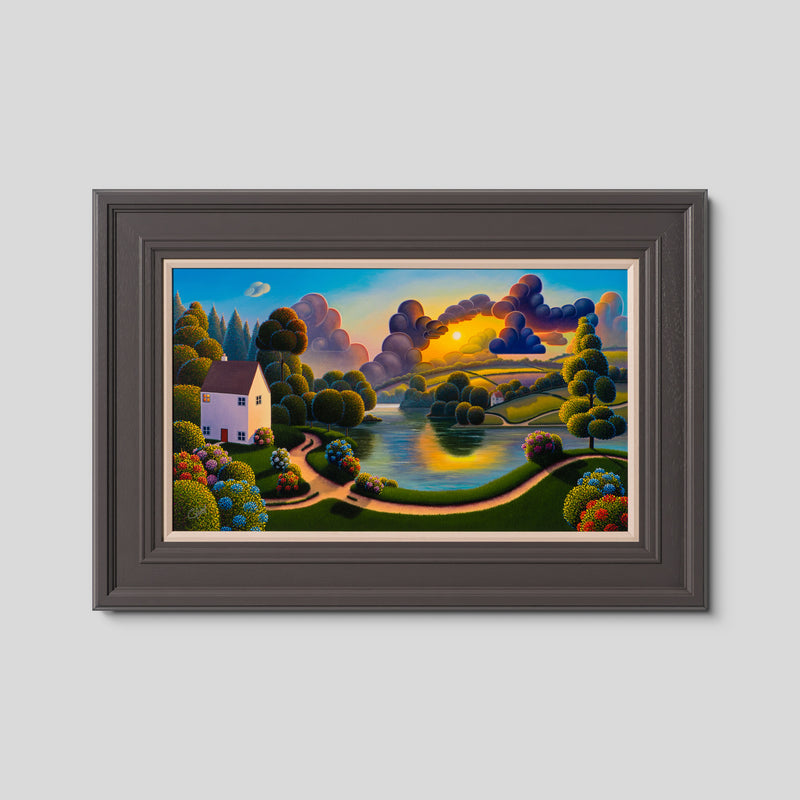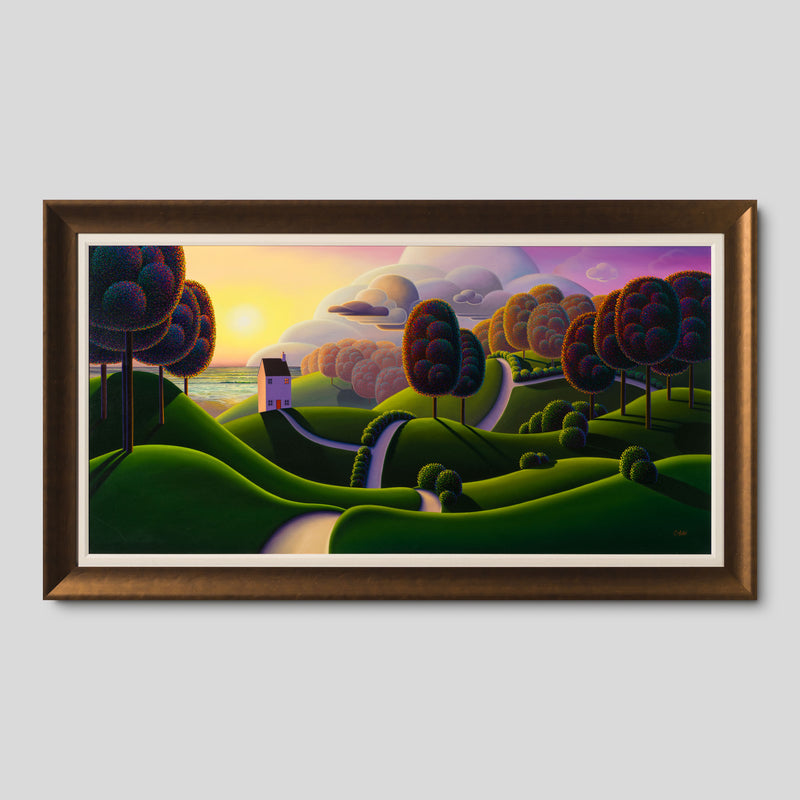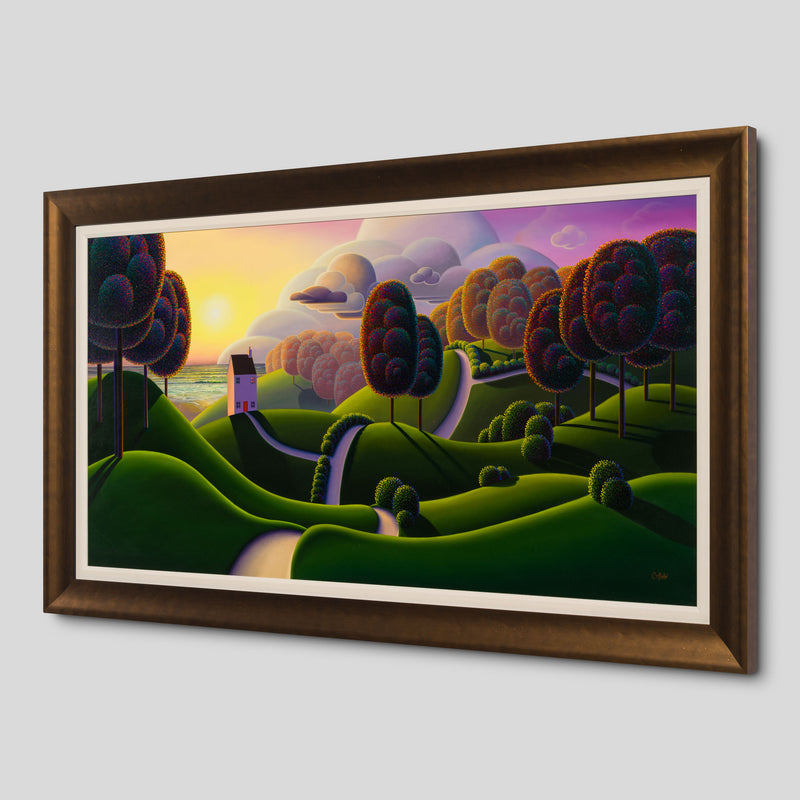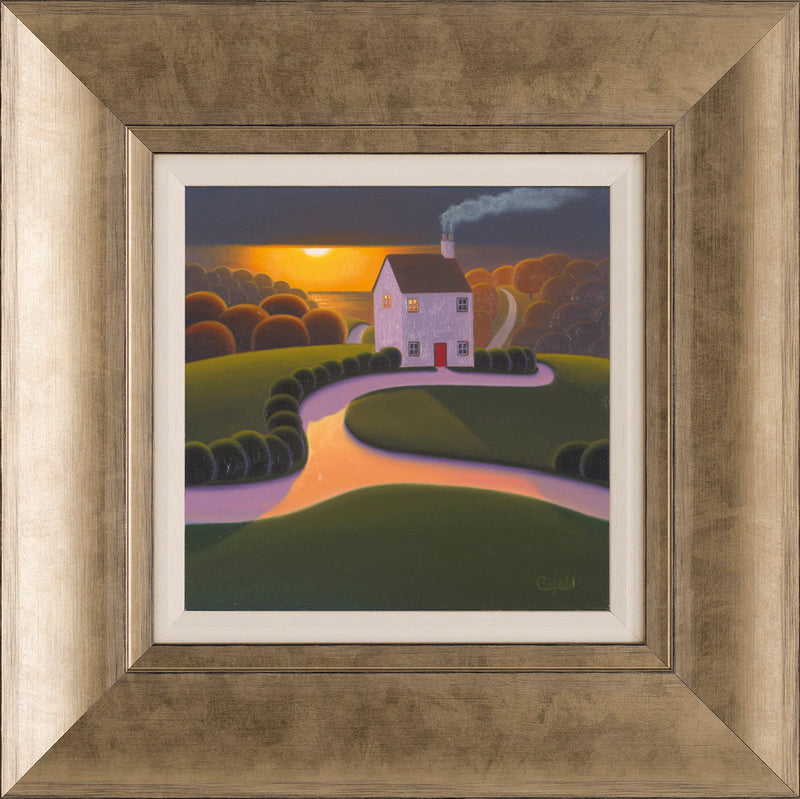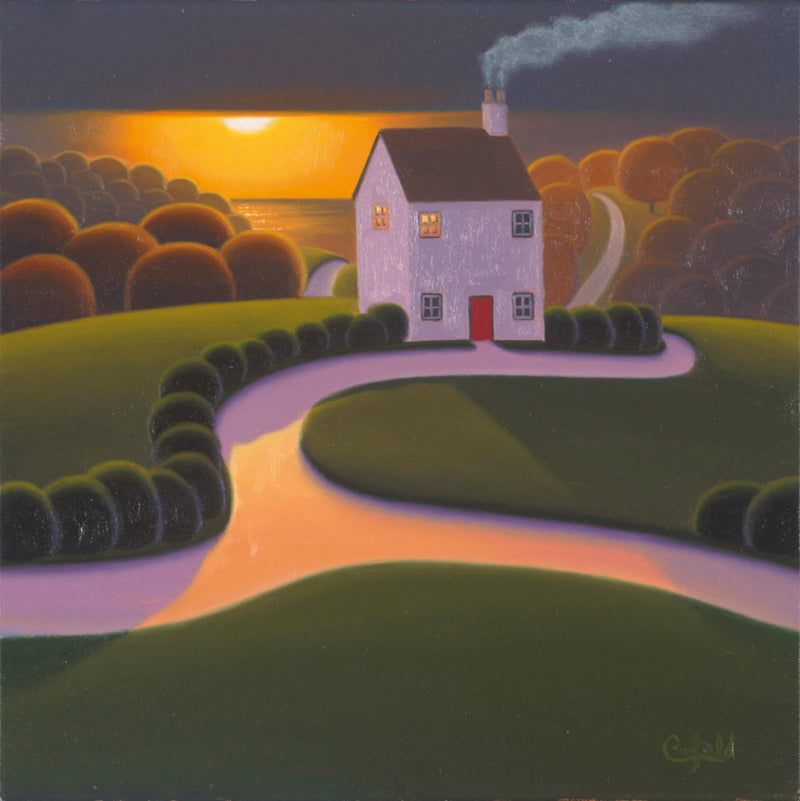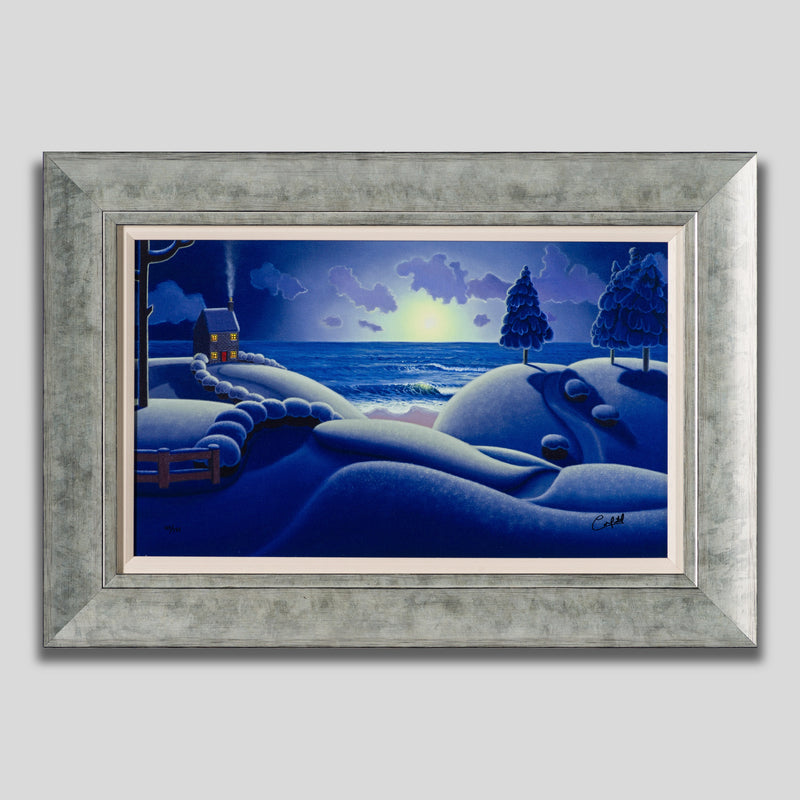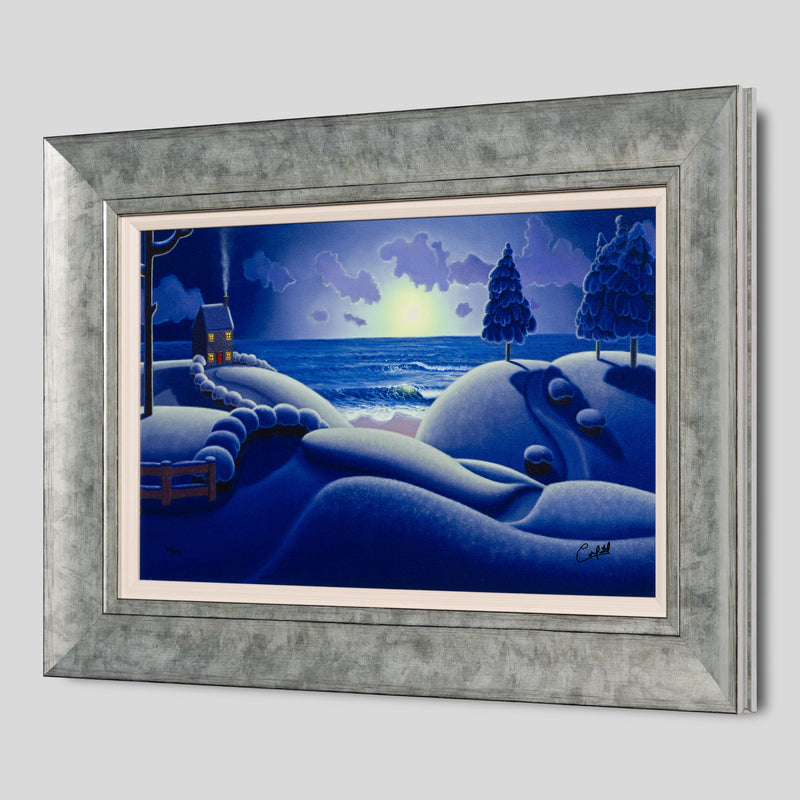A former engineer, Paul brings the exacting techniques of that career to his art, with his incredibly precise subjects, deep knowledge of colour theory and huge attention to detail – he uses an OptiVisor; a pair of glasses with precision-ground optical glass lenses, when he is painting tiny details a fraction of a millimetre in size.
His work as an artist started on a much larger scale, however. A fan of custom cars since he was six, he took up airbrushing in the style of the cars he admired. He became so skilled at it that he developed a growing army of collectors in the USA. He became a professional artist aged 32, working as an airbrush artist, but growing increasingly interested in oil painting, suddenly decided to pack all his airbrush kit up one day and sold it. That same day he bought his first oil paints – a very good decision.
Paul has dubbed his painting style as ‘Idealism’, pursuing his own ideal of life. He strips existence down to the basics; in his work there are no telephone wires, no street lights, and no busy roads for cars. It’s a world many of us wish we could live in, with views we would like to look upon. Paul says although the paintings are idyllic, everything still looks like it is meant to be there and nothing feels superficial.
Paul’s pieces give the viewer a feeling of calm, and his trademark white cottages make them feel like they’re coming home. Paul also finds calm in creating art in his studio in his Dorset home, as he lives with Asperger’s Syndrome, which can cause severe anxiety. “I bought my current because it fulfils everything I need be comfortable in myself and I rarely ever leave its boundaries,” he explains. “That’s just how it is and I never really notice. I'm often in my garden studio often for two-thirds of the day! Home is my sanctuary”.
Paul’s art and Asperger’s have proven to be an incredible combination which has made him a prolific and successful artist. “I was good at art at school and my teacher said it could be my career. So, when I left school I applied to art college to study technical illustration. Based upon my portfolio I was accepted straight away, but the thought of being around all those new people meant that I eventually turned the place down. That was probably the first time that my autism had a real life- changing effect and it has done ever since.
“But my adult life has been very different to my childhood. Art was always a calling but I could never see a way to get past the barriers until I was in my mid-twenties and saw art as a way out of the regular 9-5 job that I hated. That’s when I really started to apply myself, eventually turning professional at 32”.
Paul has always had two different art styles; one is his rolling landscapes, seascapes and iconic white houses which are so beloved by his loyal collectors. The other is hyperrealism which he uses in his portraiture and abstract work. Paul has been developing his style to bring elements of both styles together, giving his latest pieces a progressive, contemporary feel.
“I begin each painting by working on the sky, then clouds, then farthest hill, next farthest hill and so on until I’m at the foreground,” Paul explains. “I paint very close to the canvas, often spending all day with my close-up magnifying goggles on! I never step back to assess everything, which is pretty much the opposite of what people think an artist must do.
“Once I start applying paint to canvas then I'm really just focusing on a centimetre or two at a time, my little size three round sable brush wrestling with applying paint and blending at the same time. I'm starting to inject new elements into my style. I decided it's time to change a few things up, the two smaller new pieces have the grass being added to foreground hills and flowers also.
“I'm experimenting with softening the dotting on the trees and bushes, tree shapes are changing a little, I'm working on new ways to paint cliff faces and new ways to draw cloud shapes, but keeping the thing that is my recognisable 'Corfield' style.”


